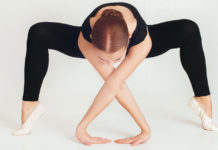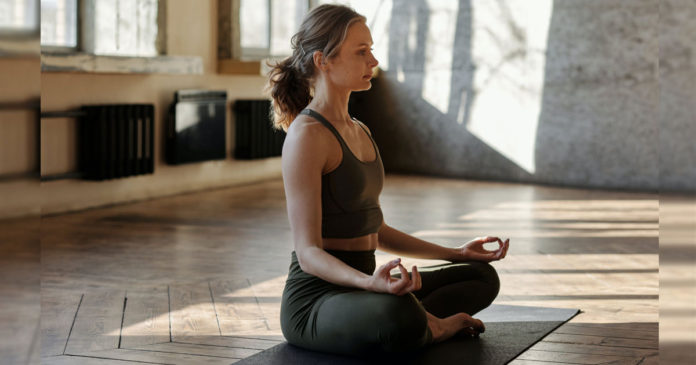Mudras, or meditation hand positions, are important aspects of meditation practice. During meditation, these meditation hand positions have a tremendous effect on the way we think and body. They are not only symbolic. Mudras are said to facilitate energy channeling, improve concentration, and strengthen spiritual ties.
Meditation hand positions have been continuously used for ages in many different traditions and civilizations. Every mudra has a distinct significance and function. You may increase the advantages of your meditation sessions by being aware of and using these hand postures.
This section will examine many forms of mudras, meditation hand positions, and discuss their meaning. We’ll talk about how certain gestures may affect our mood, encourage calmness, sharpen our focus, or even awaken our inner spiritual powers.
Knowing the importance of meditation hand positions will help you make the most of these age-old practices, whether you are a novice or an experienced practitioner wishing to enhance your practice. So let’s go out on this adventure together as we investigate the realm of mudras and how they might improve our overall well being while we meditate.
Meditation Hand Positions: How to Practice Them
Meditation hand positions known as mudras have been a part of many spiritual and therapeutic traditions for ages. They are said to have the ability to affect how energy moves through the body and enhance both mental and physical health. We will look at a few of the most popular mudras as well as how to use them in this part.
The Lotus Mudra is among the most often used mudras. With your palms facing up, clasp your hands together in the middle of your heart to make this mudra. Then, with your other fingers spread outward like a lotus flower in bloom, connect your thumbs or little fingers together. The Lotus Mudra is linked to spiritual development, enlightenment, and purity.
The Gyan Mudra is another often used mudra. In this mudra, you extend each of your three fingers while making contact with the tip of the thumb on your index finger. It is said that the Gyan Mudra improves knowledge, memory, and focus.
Combining the index finger and forefinger while extending the remaining three digits creates the Chin Mudra. This mudra represents awareness and togetherness. To promote mental tranquility and enhance consciousness, it is frequently employed in conjunction with pranayama or meditation.
Anjali Mudra: This prayer stance, also called namaste or Anjali Mudra, is made by squeezing the palms together at the center of the heart while pointing the fingers upward. This mudra is a symbol of respect, thankfulness, and self- and other-connection.
The last mudra is called Shuni Mudra, and it entails extending other fingers while using your thumb to contact the tip of the middle finger. It is said that the Shuni Mudra cultivates inner strength, patience, discipline, and attention.
Regular practice of these mudras
Regular practice of these mudras may reduce stress, enhance attention and focus, and balance the body’s energy flow, among other advantages. It’s crucial to remember that continuous practice is necessary to completely reap these advantages.
To verify that these meditation hand positions are appropriate for your specific requirements and medical problems, always seek the advice of a trained teacher or practitioner.
Lotus Mudra
A meditation hand positions that is often employed during meditation activities, the Lotus Mudra is connected to the lotus flower. Deep symbolism surrounds this mudra, and practitioners get a host of advantages.
The Padma Mudra, or lotus flower hand motion, is a symbol for spiritual development, enlightenment, and purity. It is said to create a state of peace and tranquility during meditation. The lotus position strengthens the association between the mudra and its meaning as a symbol. It is a sitting position that resembles the form of a lotus flower.
It is said that using Lotus Mudra while meditation opens up certain energy pathways in the body. This may support brain clarity, lower stress levels, and assist maintain emotional equilibrium. This mudra is also said to awaken the heart chakra, facilitating closer relationships with both oneself and other people.
Physically speaking, sitting in a lotus position strengthens the core musculature and encourages spinal alignment, which helps with posture. Additionally, it promotes deep breathing techniques that may improve oxygen intake and lung capacity.
All things considered, adding Lotus Mudra to the practice of meditation may have mental, bodily, and spiritual advantages. It facilitates inner calm and relaxation and opens the door to a closer relationship with oneself.
Gyan Mudra
The wisdom gesture, or gan mudra, is one of the meditation hand positions that is often used in meditation techniques. The thumb and index finger of this mudra are lightly squeezed together, while the remaining three fingers are spread apart.
It is said that the Gyan Mudra offers several advantages for attention and concentration while practicing meditation. It’s thought that putting the thumb and index finger together activates brain regions linked to wisdom and intelligence. This has the potential to boost memory and mental clarity.
Moreover, it is believed that using Gyan Mudra would quiet the mind and lessen outside distractions, enabling higher levels of focus while meditating. Additionally, it may foster a calm and peaceful inner being.
Gyan Mudra is said to provide advantages for general well being in addition to improved attention. It could lessen tension and anxiety, boost general cognitive performance, and improve the quality of sleep.
It’s crucial to remember that, even while Gyan Mudra may be a useful tool in meditation, problems with attention or concentration shouldn’t be solved just by using it. It works best when combined with regular meditation practice and other awareness exercises.
All things considered, adding Gyan Mudra to your meditation practice could provide an extra degree of assistance in developing inner knowledge, profound concentration, and mental clarity.
Chin Mudra
Another name for the awareness gesture is the chin mudra, which is a common meditation hand positions. “Chin” signifies awareness in Sanskrit, while “mudra” is a gesture or seal. This formidable mudra is executed by delicately pressing the index fingertip against the thumb, all the while maintaining the extension of the remaining three fingers.
For individuals who do it on a regular basis, the Chin Mudra has great significance and advantages. It is thought to provide a link between personal awareness and collective consciousness. The index and thumb being joined represents harmony and oneness within the self.
The potential of Chin Mudra to improve attention during meditation is one of its main advantages. Through this motion, a link is made that facilitates mental calmness and enhanced attention, enabling practitioners to go deeper into their mindfulness practice.
Additionally, it is believed that by regulating prana, or vital life force, Chin Mudra stimulates energy flow inside the body. It may lessen stress, assist control blood pressure, and enhance general wellbeing.
Additionally, this mudra is accessible to both novice and seasoned meditators equally since it may be done anytime and anyplace. By adding Chin Mudra to your meditation practice, you may enhance its benefits and achieve a calmer, more inward state of mind.
It’s crucial to remember that even while chin mudra offers many advantages for those who meditate. It shouldn’t take the place of expert medical counsel or care when necessary. Before implementing a new practice or method into your routine. It’s essential to speak with a trained teacher or practitioner, as with every new practice or technique.
Anjali Mudra
The namaste gesture, or Anjali Mudra, is a hand posture that is often employed in yoga and meditation. The word “mudra” denotes a symbolic hand motion, while “anjali” means “offering” or “salutation.”
With the fingers facing upward, both palms of both hands are brought together at the center of the heart to create the Anjali Mudra. In many different cultures and spiritual traditions, this stance akin to prayer has profound meaning and importance.
The Anjali Mudra is a respectful and appreciative gesture used in meditation. It is a means of appreciating and recognizing the divine inside oneself as well as other people. Practitioners develop a sensation of oneness, connection, and inner calm by uniting their hands at the heart center.
Another popular way to greet or express gratitude is with the Anjali Mudra. It is frequently accompanied by the salutation “namaste,” which signifies reverence or “the divine within me respects the divine within you.” This gesture reminds us to treat others with kindness, empathy, and a willingness to help.
In addition to its spiritual significance, Anjali Mudra may be considered a physical representation of harmony and balance. By bringing both hands together, one may establish balance by establishing symmetry on both sides of the body.
In general, the Anjali Mudra may be used as a kind reminder to build awareness, appreciation, and regard for both oneself and others during meditation. It is also a way to incorporate it into everyday life.
Shuni Mudra
The Shuni Mudra hand gesture, often called the Wisdom Seal, is an important symbolic stance in many religions and philosophies. With the other fingers extended, this mudra entails connecting the tips of the thumb and middle finger.
It is said that the Shuni Mudra fosters mental clarity, serenity, and inner calm. It is said to improve attention and concentration while doing meditation or any other activity that calls for mental sharpness. People may develop a feeling of harmony and serenity inside themselves by using this mudra.
The Sanskrit root of the word “Shuni” means “zero” or “emptiness.” This means releasing distractions and attachments so that the mind may become quiet and open. The thumb and middle finger together symbolize the joining of divine awareness (thumb) and wisdom (middle finger).
Regular Shuni Mudra practice helps facilitate access to one’s inner knowledge and intuition. It is frequently employed as a technique for introspection, meditation, and reaching higher realms of awareness.
Simply place the middle fingertip against the thumb while maintaining upright digits to execute this mudra. Depending on your taste, you may make this motion with both hands at once or just one.
It is crucial to remember that while many practitioners find spiritual meaning in this meditation hand positions. It should never be seen as a miracle cure or a replacement for expert advice when it comes to issues pertaining to mental health and emotional stability.
The Benefits of Incorporating Hand Positions into Your Meditation Practice
Using mudras, or meditation hand positions, in your meditation practice may have a number of advantages. For millennia, several spiritual and medicinal traditions have used meditation hand positions known as mudras to improve the body’s energy flow and equilibrium.
Mudras may help you establish a stronger spiritual connection during meditation, which is one of the main advantages of employing them. Every mudra is said to activate certain energy channels inside the body, assisting in balancing and directing the flow of prana, the life force energy. You may access this energy network and feel more present and connected to your inner self by intentionally adopting hand postures.
Furthermore, using mudras in your practice helps improve attention and focus. The various meditation hand positions cause the brain to engage distinct circuits, some of which are connected to mindfulness and attention. Through the use of mudras, you may activate these circuits, supporting your capacity to remain mindful, quiet your mind, and enhance your meditation experience.
Every mudra also has a distinct meaning and purpose of its own. You may enhance the impact of a mudra by selecting one that is in line with your aims or objectives for the meditation session. For instance, during meditation, the Gyan Mudra—thumb tip contacting index finger tip—is often utilized to increase wisdom and understanding.
In conclusion, using meditation hand positions, or mudras, in your meditation practice has several advantages, including adjusting the flow of energy, strengthening your spiritual connection, improving concentration, and bringing your objectives to life. Changing up your meditation hand positions may help you discover new levels of awareness of oneself and inner calm while also giving your meditation experience more depth and flavor.











